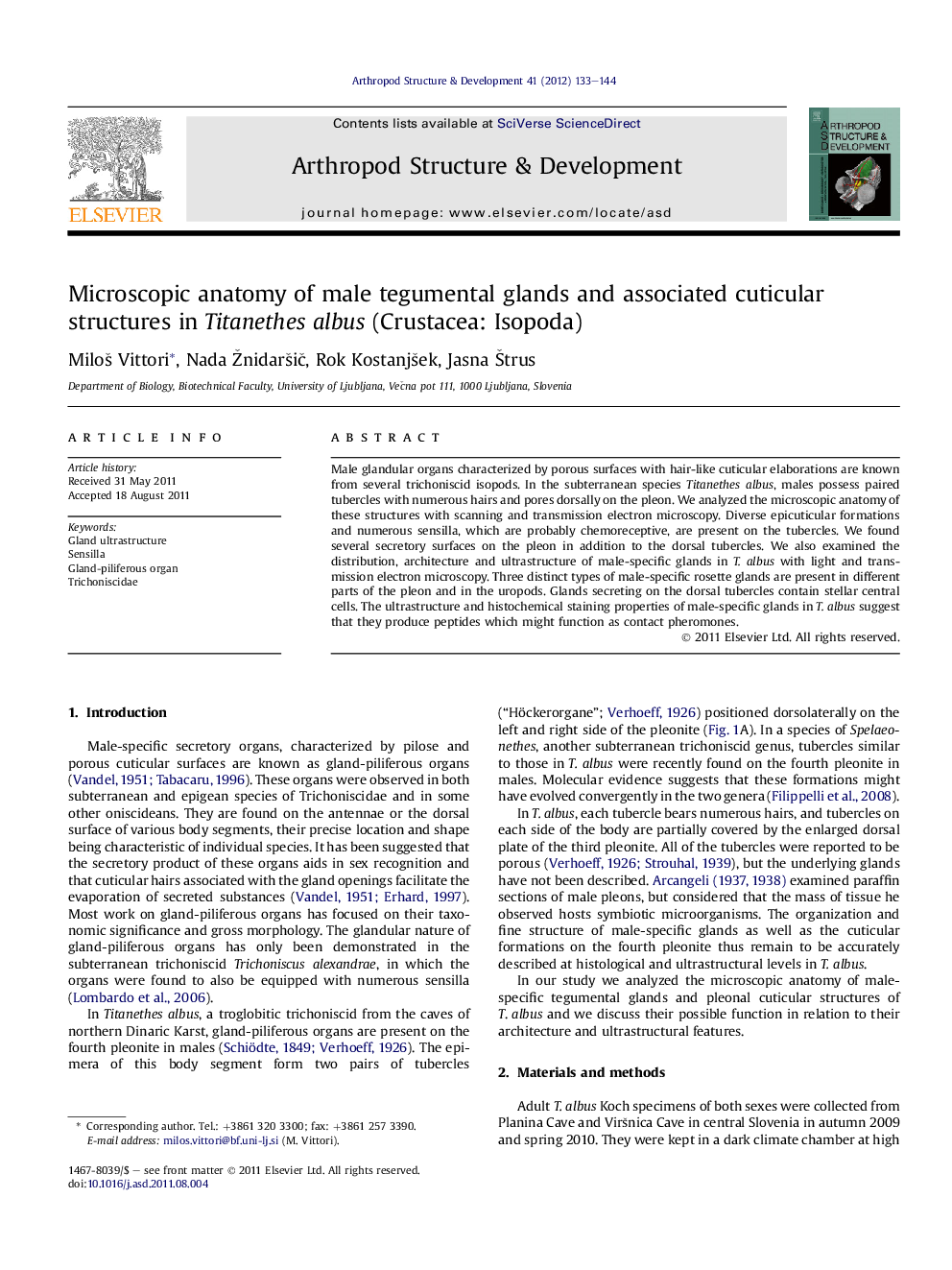| Article ID | Journal | Published Year | Pages | File Type |
|---|---|---|---|---|
| 2778769 | Arthropod Structure & Development | 2012 | 12 Pages |
Male glandular organs characterized by porous surfaces with hair-like cuticular elaborations are known from several trichoniscid isopods. In the subterranean species Titanethes albus, males possess paired tubercles with numerous hairs and pores dorsally on the pleon. We analyzed the microscopic anatomy of these structures with scanning and transmission electron microscopy. Diverse epicuticular formations and numerous sensilla, which are probably chemoreceptive, are present on the tubercles. We found several secretory surfaces on the pleon in addition to the dorsal tubercles. We also examined the distribution, architecture and ultrastructure of male-specific glands in T. albus with light and transmission electron microscopy. Three distinct types of male-specific rosette glands are present in different parts of the pleon and in the uropods. Glands secreting on the dorsal tubercles contain stellar central cells. The ultrastructure and histochemical staining properties of male-specific glands in T. albus suggest that they produce peptides which might function as contact pheromones.
► We examine the structure of gland-piliferous organs in the cave oniscid T. albus. ► Three types of rosette glands were found in the pleon and uropods of T. albus males. ► Glands secrete onto surfaces covered with sensilla and epicuticular projections. ► Sensilla accompanying gland openings are probably chemoreceptive. ► Putative function of gland-piliferous organs in mating is discussed.
